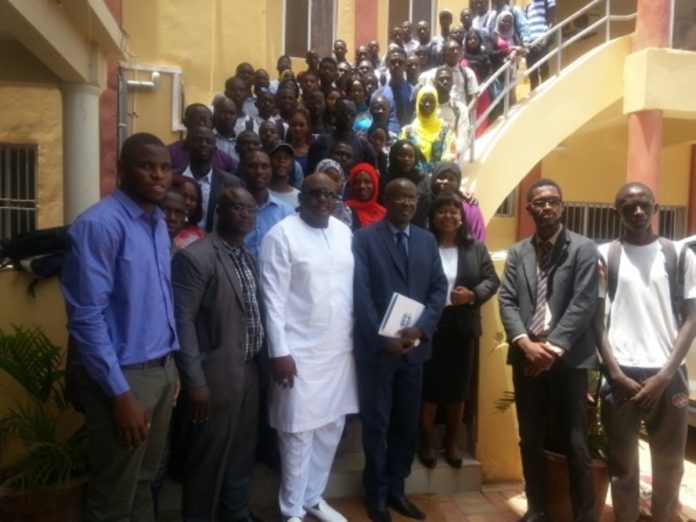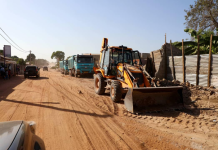By Nelson Manneh
The International Monetary Fund (IMF) in an outreach forum on the 10th of June 2019, presented the April 2019 Regional Economic Outlook (REO) report for Sub-Saharan Africa at The University of The Gambia’s Faculty of Law building in Kanifing. The report brings students from different institutions to discuss issues pertaining to the report.
The REO is the flagship publication of the IMF’s Africa Department which provides a cross-country analysis of economic development within Sub-Saharan Africa.
The report according to the IMF representatives discusses the REO report and key challenges confronting the region’s policymakers. The report also contained country-specific data and economic forecasts and analytical chapters on issues of interest to Sub-Saharan Africa.
Rube E.M. Randall, the IMF’s representative in the Gambia, said the report is the main vehicle for conducting regional surveillance. “Basically, we take on board all countries within Sub-Saharan Africa and make cross-cutting analyses. We look at the development across the region and make policy recommendations,” she said. The IMF representative added that they normally divide countries based on their resources before analyzing their economic potentials.
Looking at the mismanagement of funds in the country by the past regime, Rube said the question is how such mistakes can be avoided; that the Gambia Government has agreed on an economic program with the IMF and the key portion of that is to make sure there is prudence in strengthening public financial management.
In taking the gathering through the report, Rube told the gathering that the economic growth in Sub-Saharan Africa is expected to reach 3.5% in 2019, up from 3% in 2018. “Growth in the Gambia is forecasted at 3.8% in 2019, exceeding the Sub-Saharan African regional forecast for 2019, and the Gambia is therefore in the upper tail of the distribution. However in the past, growth in the Gambia has been more volatile than the average for Sub-Saharan Africa, but is currently projected to cover the 5% over the medium, exceeding the projected average for SSA,” she said.
Rube’s presentation further showed that The Gambia is currently already in debt distress. “Remains a regional outlier with a debt to GDP ratio of 87% at end 2018 and debt services ratios about four times higher than the SSA average,” she said.




















